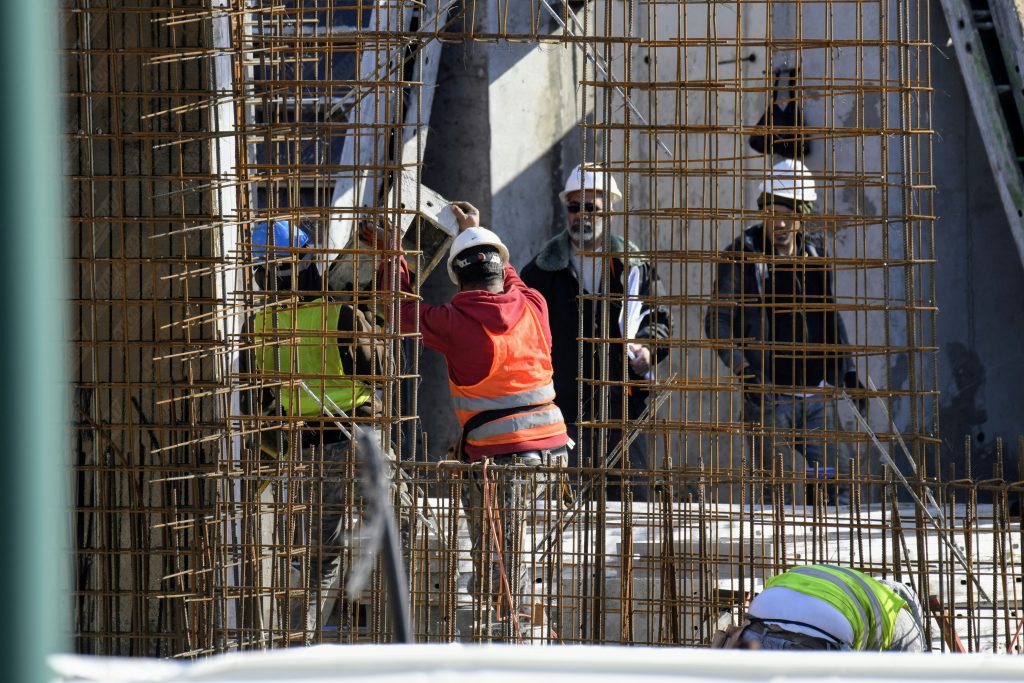Exploring the Fundamentals of Rebar Steel
Rebar steel, also known as reinforcing steel or reinforcement steel, plays a crucial role in modern construction by providing tensile strength to reinforced concrete structures. Rebar steel is essentially a steel bar or mesh of steel wires used as a tension device in reinforced concrete and masonry structures. Its primary function is to strengthen and support the concrete under tension, thereby enhancing the overall durability and load-bearing capacity of various construction elements.
What is Rebar Steel?
Definition and Basic Properties
Rebar steel is typically manufactured with ridges that help anchor it firmly within the concrete. This feature ensures better adhesion between the two materials, preventing slippage and enhancing the structural integrity of the concrete. The most common type of rebar used is carbon steel rebar, owing to its cost-effectiveness and favorable mechanical properties.
The Role of Rebar in Modern Construction
In modern construction practices, rebar is an indispensable component for reinforcing various concrete structures such as floors, walls, pillars, footings, foundations, ceilings, and roofs. By mitigating the inherent weakness of concrete in tension, rebar significantly contributes to the overall stability and longevity of these structures.
Types of Rebar Steel
Carbon Steel Rebar: The Standard Choice
Carbon steel rebar remains the standard choice for most residential and commercial construction projects due to its affordability and robustness. It effectively enhances the tensile strength of concrete without imposing excessive costs on construction budgets.
Innovations in Rebar Materials
Recent advancements have led to innovations in rebar materials, including galvanized rebar designed to withstand corrosive environments. For instance, a major infrastructure project in Singapore utilized galvanized rebar coated to protect against corrosion caused by sea-water exposure. The project required 10,000 metric tons of galvanized rebar for pipelines designed for a service life of 100 years.
By embracing innovative materials like galvanized rebar, construction projects can ensure enhanced durability even in challenging environmental conditions.
Key Applications of Rebar in Construction
Rebar steel, with its exceptional tensile strength and reinforcement properties, finds diverse applications in construction projects, contributing to the structural integrity and longevity of various concrete structures.
Strengthening Concrete Structures
How Rebar Works with Concrete
Rebar steel interacts synergistically with concrete to counteract tensile forces. When embedded within the concrete matrix, rebar effectively absorbs tension, preventing cracks and fractures that may compromise the structural stability of the concrete. This collaborative relationship between rebar and concrete ensures that the composite material can withstand both compressive and tensile loads, making it an ideal choice for a wide range of construction applications.
Common Structures That Rely on Rebar
Numerous essential structures rely on rebar steel for enhanced strength and durability. These include foundations for residential buildings, industrial facilities, and high-rise constructions. Additionally, retaining walls, slabs, and columns in commercial structures also benefit from the reinforcement provided by rebar steel. The use of rebar is particularly crucial in earthquake-prone regions where it helps prevent catastrophic structural failure by reinforcing critical load-bearing elements.
Rebar in Infrastructure Projects
Bridges and Highways
Infrastructure projects such as bridges and highways heavily depend on rebar steel to withstand heavy traffic loads and environmental stressors. The incorporation of reinforcing steel into bridge components enhances their ability to endure dynamic forces while maintaining structural integrity over extended periods. Similarly, highways reinforced with rebar exhibit improved resistance to cracking and deformation caused by vehicular movement.
Public and Commercial Buildings
Public infrastructure like airports, hospitals, schools, and commercial buildings utilize reinforcing steel to reinforce critical sections such as beams, columns, and floor slabs. By integrating rebar, these structures can effectively resist dynamic loads imposed by occupants or equipment while ensuring long-term safety and stability.
The application of reinforcing steel extends beyond traditional construction practices into innovative projects that demand superior performance under challenging conditions.
The Unseen Benefits of Using Rebar Steel
Rebar steel offers a multitude of unseen benefits that contribute to the longevity, sustainability, and cost-effectiveness of construction projects. Understanding these advantages is crucial for architects, engineers, and builders seeking to optimize the structural integrity and durability of their creations.
Enhancing Durability and Longevity
Resistance to Tension Forces
One of the primary unseen benefits of rebar steel lies in its exceptional resistance to tension forces. When embedded within concrete structures, rebar effectively mitigates tensile stress, preventing cracks and fractures that could compromise the integrity of the entire system. This property significantly enhances the lifespan of reinforced concrete elements, ensuring they can withstand dynamic loads and environmental stressors over extended periods.
Weather and Corrosion Resistance
Innovations in rebar materials have led to the development of galvanized rebar, which offers superior weather and corrosion resistance compared to traditional carbon steel rebar. Galvanized rebar is specifically chosen for its ability to resist site handling damage and provide long sections that minimize joints and cuts. This feature makes it an ideal choice for construction projects in corrosive environments or areas prone to extreme weather conditions.
The incorporation of galvanized rebar into infrastructure projects ensures enhanced durability even in challenging environmental conditions such as coastal regions or industrial sites with high humidity levels.
Cost-Effectiveness and Sustainability
Economic Advantages of Using Rebar
Utilizing reinforcing steel presents significant economic advantages for construction projects. By enhancing the durability and longevity of concrete structures, rebar reduces the need for frequent maintenance or premature replacements, resulting in long-term cost savings. Additionally, the use of innovative materials like galvanized rebar minimizes repair expenses associated with corrosion-related damage, further contributing to overall project sustainability.
Rebar Recycling and Environmental Impact
An often overlooked benefit of using reinforcing steel is its recyclability, aligning with sustainable construction practices. At the end of a structure’s lifecycle or during renovation projects, rebar can be salvaged from demolished concrete elements and repurposed for new construction endeavors. This not only reduces waste but also minimizes the demand for raw materials, making it an environmentally responsible choice for builders committed to sustainable development.
Furthermore, by choosing galvanized rebar over other building materials due to its resistance to site handling damage and ability to provide long sections that minimize joints and cuts, construction projects can achieve both economic efficiency and environmental sustainability simultaneously.
Qingdao Sunrise New Materials Co., Ltd. (referred to as “Sunrise New Materials”) is an international and professional supplier of steel and non-ferrous metal raw materials. The company is committed to providing more reliable and satisfactory customized supply solutions for steel and metal products to global users.
Adhering to the corporate spirit of “being a person, building a business, and serving the country with the will of steel”, Sunrise New Materials actively promotes the high-end transformation of steel intelligent manufacturing, based on the concept of “quality, high-end, green, and ecological”, and focuses on building a benchmark enterprise in the industry, contributing Sunrise wisdom and strength to the development of the steel industry worldwide!
Ensuring Quality and Safety in Rebar Steel Use
Quality and safety are paramount considerations in the use of rebar steel. Adhering to stringent standards and implementing best practices not only ensures the structural integrity of construction projects but also safeguards the well-being of workers and occupants.
Quality Standards for Rebar Steel
Certifications and Testing
In response to market needs, there is a growing emphasis on transparency within the rebar industry. This includes rigorous certifications and testing protocols to validate the quality and performance of rebar steel. Industry stakeholders advocate for standardized testing procedures that encompass tensile strength, yield strength, elongation, and chemical composition. These measures provide assurance regarding the mechanical properties and durability of rebar products, thereby instilling confidence in their suitability for diverse construction applications.
Choosing the Right Rebar for Your Project
Selecting the appropriate type of reinforcing steel is pivotal in ensuring optimal performance and longevity of concrete structures. Factors such as environmental conditions, load-bearing requirements, and corrosive potential must be carefully evaluated when choosing rebar steel. For instance, in environments prone to corrosion, galvanized rebar emerges as a preferred choice due to its superior resistance to weather-induced deterioration. Moreover, advancements in rebar materials offer innovative solutions tailored to specific project demands, underscoring the importance of informed decision-making when selecting reinforcement steel.
Safety Measures in Handling and Installation
Best Practices for Workers
The handling and installation of reinforcing steel demand strict adherence to safety protocols to mitigate potential hazards. Workers involved in cutting, bending, or securing rebar should receive comprehensive training on safe handling practices to prevent injuries or accidents. Furthermore, the utilization of personal protective equipment (PPE) such as gloves, helmets, and eye protection is imperative to minimize occupational risks associated with working with rebar steel.
Innovations in Rebar Installation Techniques
Innovative approaches have emerged to streamline rebar installation processes while enhancing safety standards. For instance, prefabricated rebar elements are gaining traction due to their efficiency in reducing on-site labor requirements and minimizing exposure to hazardous tasks. Additionally, advancements in mechanized cutting and bending technologies contribute to precision engineering while mitigating manual labor-related risks. These innovations underscore a concerted effort within the industry to prioritize worker safety without compromising productivity or quality.
Conclusion: Reflecting on the Importance of Rebar Steel
The Integral Role of Rebar in Construction
Throughout the evolution of construction practices, rebar steel has emerged as an indispensable component, revolutionizing the structural integrity and durability of concrete elements. By addressing the inherent tensile weakness of concrete, rebar has become a cornerstone in reinforcing diverse construction elements, ranging from foundational structures to expansive infrastructure projects.
Summary of Key Points
- Structural Reinforcement: Rebar steel serves as a critical reinforcement element in concrete structures, effectively countering tensile forces and enhancing overall stability.
- Diverse Applications: From residential buildings to complex infrastructure projects, rebar steel finds extensive applications across various construction domains, ensuring longevity and resilience.
- Innovative Materials: The introduction of innovative materials such as galvanized rebar has further expanded the capabilities of rebar steel, offering enhanced weather and corrosion resistance.
The Future of Rebar in Building and Infrastructure
As construction technologies continue to advance, the future of rebar steel appears promising with ongoing innovations aimed at optimizing performance and sustainability. The integration of advanced materials and fabrication techniques is poised to elevate the role of rebar in shaping resilient and enduring structures. Furthermore, heightened emphasis on quality control measures and safety standards underscores a collective commitment to fortifying construction practices through the pervasive influence of rebar steel.
In essence, the enduring significance of rebar steel lies not only in its capacity to reinforce concrete but also in its ability to fortify the foundations upon which modern constructions stand. As builders and engineers navigate evolving challenges within the construction landscape, rebar remains an unwavering ally in their pursuit of creating enduring legacies that withstand the test of time.








